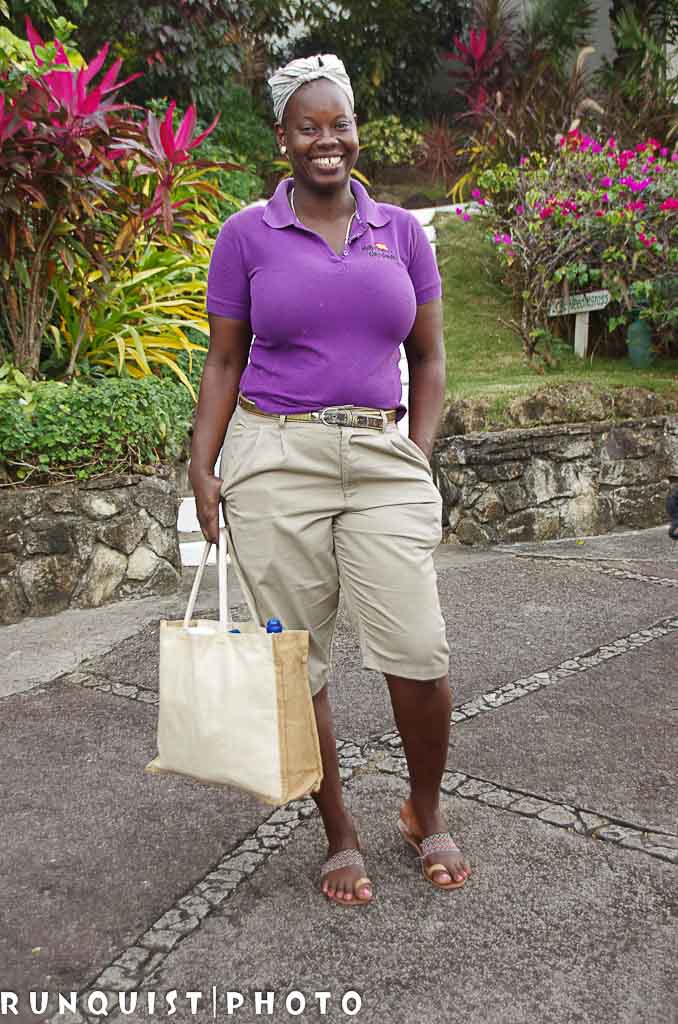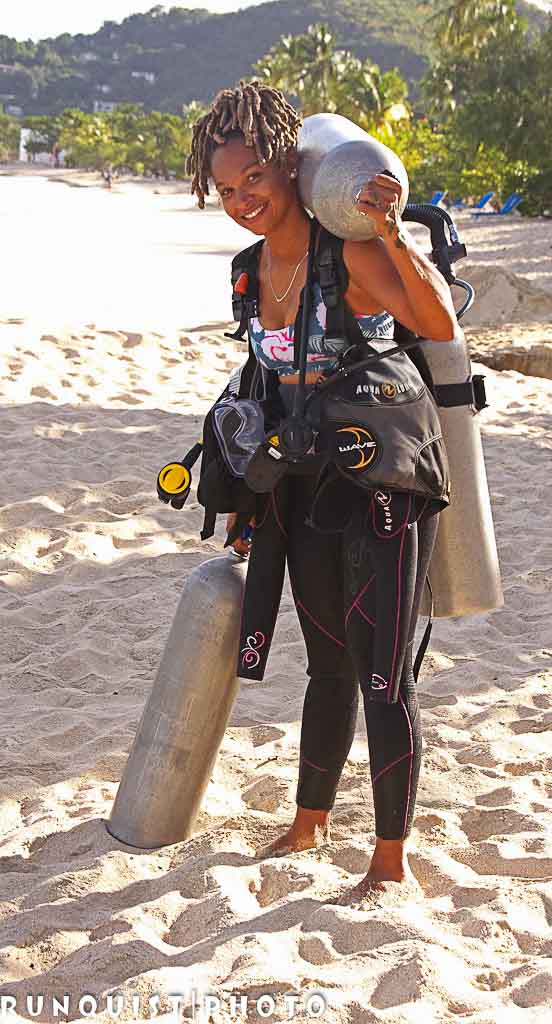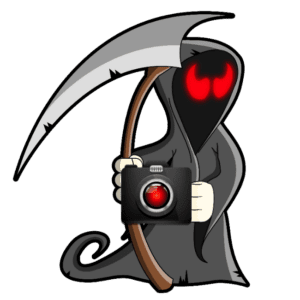Once the dive boat put in back on the beach and we rinsed off our masks and regulators, we realized we had worked up an appetite. Along Grand Anse beach there are lots of places to have an excellent meal, or a beer and a burger, or a couple of exotic umbrella drinks to get your party started. Mount Cinnamon’s beach eatery, Savvy, is a big open-air tent with a bar and a sophisticated menu. The Spice Island restaurant has lots of inviting tables under a roof in the shade on the patio. But we walked further down the beach to check out the more budget friendly “Umbrellas” next to EcoDive. It’s a double-decker burger shack open to the breeze, with a balcony view of the beach.
The noontime Caribbean sun is hot, and we called for some cool drinks while we waited to experience the islands traditional foods. After the exertion of the morning dives, it was great to sit back and take in the scene. European and South American families were checking out the menu. The Grenadian waitresses were quick and friendly. A group of pretty American coeds from St Georges Medical School were ordering Bahama Mamas and Crimson Mojitos. They clinked their glasses and made toasts to “studying more and partying less” while they chatted and giggled and slowly got smashed. It was fun to watch them but hard to see how this was going to help.
At first, the bill shocked us. Ninety bucks for a light lunch? But that was in “EC,” Eastern Caribbean dollars. It came to around $36 US for the three of us. Not bad for a tourist place on the beach. We could have stayed there all day, talking, sipping, watching the dive boats load up and head out in the blazing sunshine for their afternoon dive. But we didn’t. We had things to do. Important things. Like… a road trip!
A guy we had met offered to take us around the island for a pretty good price, and we were due to meet up. John, a Canadian, had moved down from Toronto seventeen years ago. He was a practical and energetic sort, an engineer. He was perfect in a way for the islands, yet in other ways at odds with the Caribbean soul. He loved it in Grenada though and was full of information about the island. What it was like when hurricane Ivan hit, where the best island food was, inside scoops on government corruption and how the Chinese were working on aid projects to ingratiate themselves in the hemisphere. He picked us up and drove north around the bay, through St Georges town, and up the high road into the mountains.
We passed signs for waterfalls and hiking trails as the road curved and climbed, and the woods grew thick. The rainy season was over, but the green remained. I was amazed at the extent of the forest when we finally got to a high point. Green mountain tops went on for miles. Development and deforestation stop, I guess, when the slopes get too arduous. And these low mountains were sharply cut and steep. The clouds were grey now, and the chilly wind swept them low. My picture of a rainforest is one hot and humid with dripping wet leaves and muddy trails. Now with the rains gone these woods were dry and crisp, and the dirt paths were hard.
John pulled over, and we took a walk up a trail that had been carved out by the park service. After a while, it leads to a wooden lookout tower. Oh well, surrounded by tall trees and mountains it didn’t give us the 360-degree view we had hoped for. Just peeks at tiny white sails away on the blue horizon between green mountains. We hiked and talked and took a dip in a pool below a waterfall. We looked for monkeys, but today they weren’t hungry for the bananas John had brought along. Mona monkeys are old world primates whose ancestors survived the trip over on slavers centuries ago.



 Photography, Lessons, Workshops and Classes.
Photography, Lessons, Workshops and Classes.


